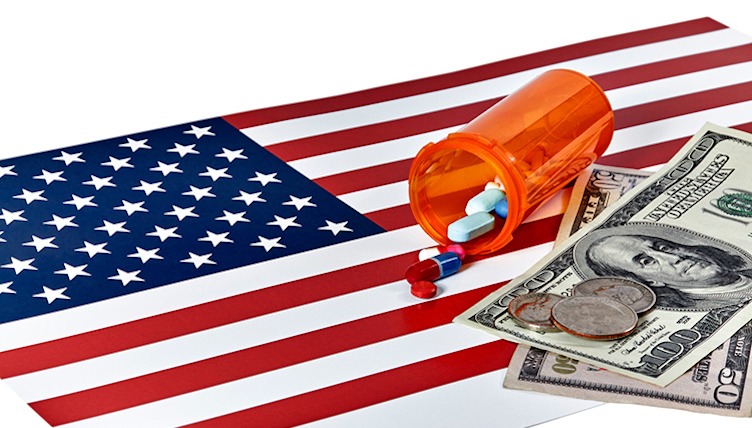Drug Pricing: Inside the Policy Debates
Although the future of healthcare reform is unclear, debates on drug pricing continue. So what should be on the radar for the pharmaceutical industry?
Drug pricing is a hot topic in Congress’ and the Trump Administration’s focus on healthcare reform. So what are the latest measures, and what is the pharma industry saying about the proposals? DCAT Value Chain Insights takes an inside look.
Debates on drug pricing
As the debate on healthcare reform proceeds, Congressional Democrats issued an economic plan, “A Better Deal: Better Jobs, Better Wages, Better Future” as a three-pronged approach that focuses on raising wages, lowering cost-of-living expenses, including a call to lower the cost of prescription drugs, and increase job-training opportunities. The plan was announced on July 25, 2017. With respect to drug pricing, the plan calls for three main elements: (1) address high prescription drug-price increases; (2) negotiate lower prescription drug prices for Medicare; and (3) require drug manufacturers to publically release data and information justifying any significant price increase.
From an organizational perspective, the plan calls for the establishment of a director of a new agency to oversee drug pricing. The agency would identify drugs that have “unconscionable” price increases and impose fines on the manufacturer that are proportional to the size of the price hike by reinvesting the money from the fines into new cures research and development at the National Institutes of Health, according to the plan. The plan also calls for companies with drugs with a “significant” price increase to be required to submit to the US Department of Health and Human Services (HHS) a justification for the price increase at least 30 days before the price increase takes effect. For purposes of the plan, a drug with a “significant” price increase would be defined as a drug that is: (1) at least $10 and had a price increase of at least 300% over five years or 100% over one year; or (2) a drug that represents the top 50th percentile of drug spending in Medicare or Medicaid and had a price increase of at least 50% over five years or 15% over one year.
Industry groups responded to the drug-cost plan. “There is broad agreement on ways we can lower drug costs while preserving incentives for innovation,” said the Biotechnology Industry Organization (BIO) in a statement. “That is why a coalition of drug-makers, insurers, consumer advocates, and others have proposed a new set of solutions to provide greater access to more affordable prescription drugs. Instead of expanding the role of the federal government as Democrats have proposed, the coalition’s approach would leverage the power of the free market because that’s the best way to lower costs and preserve the medical innovation that improves the lives of patients.”
BIO said that the proposal does not address what it terms as the “real” drivers of healthcare spending: hospital care and provider services. It said that the plan would be a “failed path toward government price controls and reduced access to prescription drugs.”
BIO also addressed issues relating to prescription drug coverage under Medicare D, the portion of Medicare that provides prescription-drug coverage. BIO says that the Medicare Part D program, which prohibits the federal government from negotiating drug prices, has cost $349 billion less (45%) than the Congressional Budget Office (CBO) originally projected. It also pointed out that private plans that administer Part D already negotiate with manufacturers to achieve savings. It cited a recent analysis from the QuintilesIMS Institute that examined average discounts and rebates across 12 widely prescribed therapy classes and found that plans and patients in Medicare Part D pay 35.3% below drugmakers’ list prices, which is lower than what the private sector generally pays for the same drugs, according to BIO.
BIO also pointed to a letter signed by more than 200 medical and patient-advocacy groups in February 2017 and that was sent to Congress to address the issue of drug-pricing negotiation under Medicare. The letter points out that Medicare Part D spending, including both brand and generic drugs, made up only 11.8% of Medicare spending in 2015. It also points out the process for setting drug prices now under Medicare D serves an intended purpose for securing discounts and rebates for drugs.
“When Part D was created, the intent was to have robust Part D plan competition and negotiation to drive substantial savings for beneficiaries,” said the letter. “As a result, Congress included a provision known as the ‘non-interference’ clause. The provision prohibits the HHS Secretary from participating in the private price negotiations between Medicare Part D plans, drug manufacturers and pharmacies. Instead, Part D plans negotiate substantial discounts and rebates with drug manufacturers as a condition of participation in the program.”
The groups in the letter also addressed calls for reforms in the process for the US government to directly negotiate drug prices. “Some suggest allowing government interference in Part D might constrain Medicare cost growth. However, CBO [Congressional Budget Office] has repeatedly said that this approach would have a negligible impact on federal spending unless the Department of Health and Human Services also limits beneficiary access to needed prescription medications. Such restrictions could include a single, national formulary for Part D plans and increased reliance on step therapy or fail-first policies, which could have a harmful impact on the people we represent,” said the signatories to the letter.
Other measures for drug pricing
Earlier this year in June 2017, the US Senate Committee on Health, Education, Labor and Pensions (HELP) held a hearing to discuss prescription drug pricing. In May 2017, the HELP Committee introduced a bill to address drug pricing, S.1131, the Fair Accountability and Innovative Research Drug Pricing Act of 2017, sponsored by Sens. Tammy Baldwin (D-WI) and John McCain (R-AZ). Companion legislation in the US House of Representatives is sponsored by Representative Jan Schakowsky (D-IL).
The Fair Accountability and Innovative Research (FAIR) Drug Pricing Act would require drug manufacturers to disclose and provide more information about planned drug price increases, including research and development costs. Specifically, the FAIR Drug Pricing Act would require drug manufacturers to notify the US Department of Health and Human Services and submit a transparency and justification report 30 days before they increase the price of certain drugs that cost at least $100 by more than 10% in one year or 25% over three years. The report will require manufacturers to provide a justification for each price increase as well as manufacturing and research and development costs for the qualifying drug, net profits attributable to the qualifying drug, marketing and advertising spending on the qualifying drug, and other information as deemed appropriate. The bill will not prohibit manufacturers from increasing prices, but it would provide notice of price increases and is intended to bring basic transparency to the market for prescription drugs.
The Trump Administration has also addressed drug pricing in a meeting with pharmaceutical industry executives in January 2017. Following that meeting, Stephen J. Ubl, president and chief executive officer of the Pharmaceutical Research and Manufacturers of America (PhRMA) issued a statement to comment on the meeting with the President. Although not specifying details, Ubl provided broad-based support for healthcare reform and addressed drug pricing. “Our industry takes seriously the concerns raised about the affordability and accessibility of prescription medicines, and we have expressed our commitment to working with the administration to advance market-based reforms,” he said in a January 2017 statement. “The current system needs to evolve to enable the private sector to lead the move to a value-driven healthcare system. To do this, we need to reform existing laws and regulations that are currently preventing private companies from negotiating better deals and paying for medicines based on the value they provide to patients and our healthcare system.”
In June 2017, PhRMA issued a report, Prescription Medicines: Costs in Context, to explain its view on how negotiation and competition in the marketplace help to keep costs under control and highlights how too often negotiated savings do not make their way to patients. “Our industry is committed to working with policymakers to advance solutions that further enhance the private marketplace, lower costs for patients, and promote continued medical innovation,” said PhRMA in a statement. Also in June 2017, PhRMA commented on the debate of government price-setting proposals that could impact the Medicare Part D program and beneficiaries. In citing a study on the long-term impact of price controls in Medicare Part D in the Forum for Health Forum and Policy, PhRMA noted that price controls would lead to a reduced number of innovative new drug introductions by as much as 25% relative to the status quo and impact life expectancy of beneficiaries.
To further stress its position with respect to proposals for price negotiations under Medicare D, PhRMA cited a recent study funded by PhRMA and conducted by the Berkeley Research Group that found that on average, more than a third of the initial list price of a medicine is rebated back to insurance companies, pharmacy benefit managers, and the government, or retained by other parts of the biopharmaceutical supply chain. In an article in Forbes in June 2017, PhRMA’s Ubl cited estimates that after factoring in negotiated discounts and rebates, prices for brand medicines increased 2.5% in 2016 and total spending on medicines increased 3.4% last year.
To that end, PhRMA is advocating for value-based payments and citing the need for reimbursement systems to evolve to better recognize and reward value and differing patient needs. In the Forbes commentary, Ubl offered ways in which biopharmaceutical companies are working with private health insurers to implement new payment arrangements for a variety of diseases. As an example, he cited that under these new arrangements, prices and rebates for the medicine could differ based on the type of cancer a patient has or how well an individual responds to treatment. He added that companies are also considering new ways to pay for treatment when a patient needs multiple high-priced innovative medicines and experimenting with money-back guarantees if a medicine does not work as intended. He also called for public policy reforms to speed adoption of new payment models, such as removing policy barriers that restrict how much information biopharmaceutical companies can share with insurance companies about the potential benefits of a treatment and reform regulations to modify existing Medicaid best price requirements that inhibit companies from taking on more risk in new payment arrangements.








